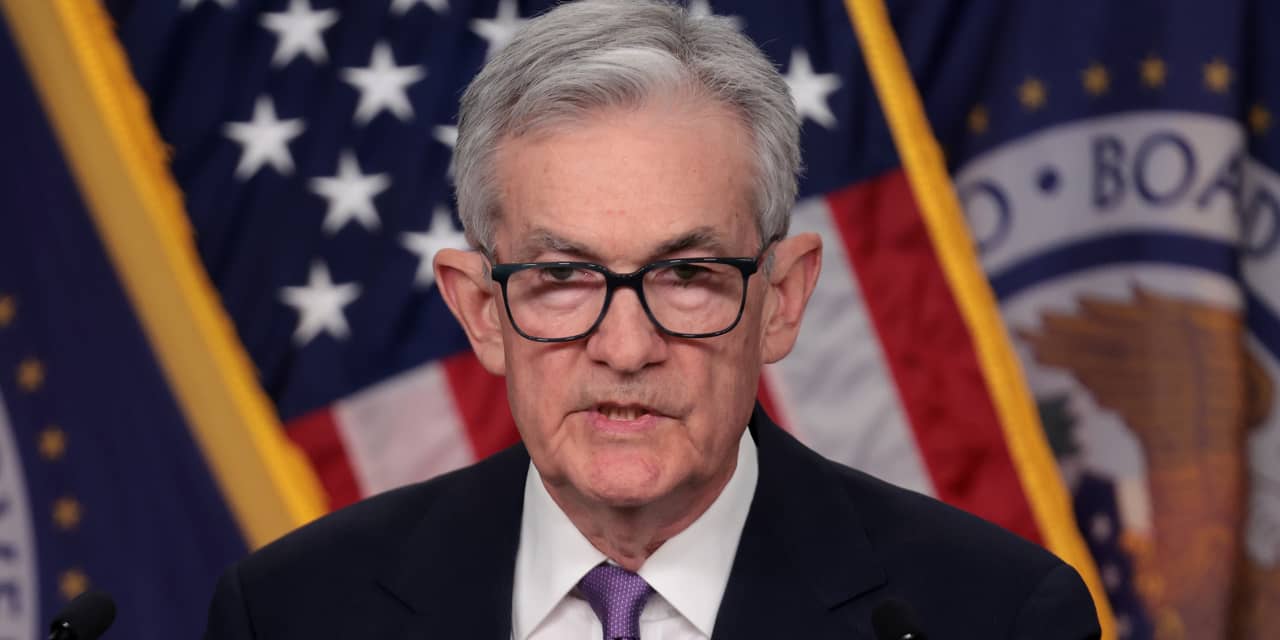Inflation has been cooling down for months, and the Federal Reserve has stopped hiking its target interest rates since July.
To prevent the economy from falling into a recession, central bank officials have hinted that rate cuts might be on the horizon in 2024. The timing and frequency of the cuts is now at the center of investors’ attention.
While Federal Open Market Committee members’ dot plot implies three quarter-point cuts by the year end of 2024, investors are counting on even more. The futures markets now expect interest rates’ target range to be 3.50% to 4.00% by the end of 2024. That would be six or seven quarter-point cuts from the current range of 5.25% to 5.50%.
The stock market has rallied on the prospect since rate cuts would boost economic activity and benefit high-risk investments like stocks; and bond yields have fallen on expectation of lower rates. But many on Wall Street believe that investors have gotten ahead of themselves and the easing of rates would be limited unless there’s solid evidence of economic deterioration.
Rate hikes typically have long lagging effects, so the coming few months would be key. If downward economic momentum picks up pace, it’ll drive the Fed to cut rates more aggressively to stimulate the economy again. If not, however, rates might stay elevated at the new “neutral” level, where the economy is in equilibrium with monetary policy neither too tight nor too loose.
Besides headline inflation measures like the Consumer Price Index (CPI) or Personal Consumption Expenditure Price Index (PCE), Barron’s has identified a few other indicators that are particularly important to watch in order to gauge whether the economy is ready for rate cuts.
Wage growth & service inflation
Despite cooling prices in consumer goods, wage growth and service costs are still relatively hot, keeping inflation from further easing. Take food for example. While grocery prices are now only 1.7% above the year-ago period, food consumed at restaurants is still 5.3% more expensive from a year ago—partially due to the high labor costs.
The average hourly earnings are till 4% higher than a year ago. According to the PCE reports, while prices for goods have been declining since September and dropped 0.7% in November, prices for services continued to rise and advanced another 0.2% in the month. Stabilizing labor costs, if achieved, would be another victory in the fight against inflation.
Shelter costs & housing supply
Housing has been a major contributor to inflation. As energy and food prices cool down, many expect declines in shelter costs to drive the next leg lower in inflation. There are signs of optimism: Housing costs in November rose at the slowest year-over-year pace since mid-2022—even though it’s still at 6.5%, much higher than most other categories.
The decline in home prices hinges greatly on an increasing supply of homes for sale. With mortgage rates high, many homeowners have been hesitant to sell and give up the lower rates they locked in. But things are improving: Active listings on Realtor.com have been increasing since spring, albeit still well below the pre-pandemic level. In November, existing home sales also ticked up from its 13-year lows after five consecutive months of declines.
Consumer sentiment & inflation expectation
Taming inflation can sometimes be a self-fulfilling prophecy: The more people worry about high prices in the future, the less they’ll save and the more they’ll buy now, which brings even more inflation. When people expect prices to be steady, the opposite will happen. That’s why it’s important to gauge how people view inflation in the short-term.
The good news is consumers’ expected inflation for the year ahead fell sharply in December to 3.1%—the lowest since March 2021—from 4.5% a month ago, according to the latest release from the University of Michigan. The improving outlook pushed overall consumer sentiment to 69.4 from 61.3, reversing four consecutive months of declines and reaching its highest reading since July.
Bond yields & spread
The bond market is reflective of how investors feel about the economy as well. When investors are concerned about a downturn, they usually flock to the safe-haven Treasuries, leading to rising prices and falling yields. After rising for much of the year, the 10-year Treasury yields has decreased from nearly 5% in October to 3.9% this week.
Meanwhile, the yield spread between the 10-year and two-year Treasury yields, often called the yield curve, has turned negative since last year. This usually foreshadows a looming recession, since it means investors are moving money from short-term bonds to long-term ones on pessimistic prospects for the economy’s near future. The gap has recently widened.
It usually takes 12 to 15 months for the economy to enter a recession after the yield curve inverts. It’s been a year and half now and there’s few signs of an imminent recession.
Maybe that’s why other corners of the bond market are not flashing red yet: The spread of junk bonds over Treasuries—an indicator of investors’ fear for default risk—is close to historic lows. But that can change quickly if the next batch of economic data paint a more gloomy outlook.
Write to Evie Liu at [email protected]
Read the full article here


